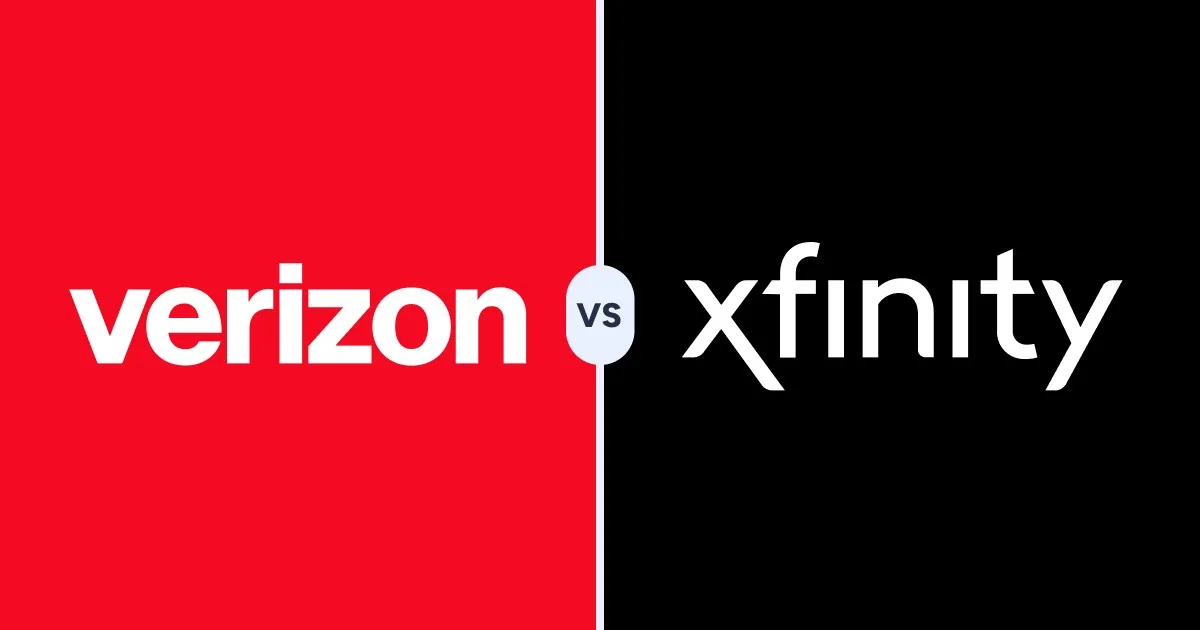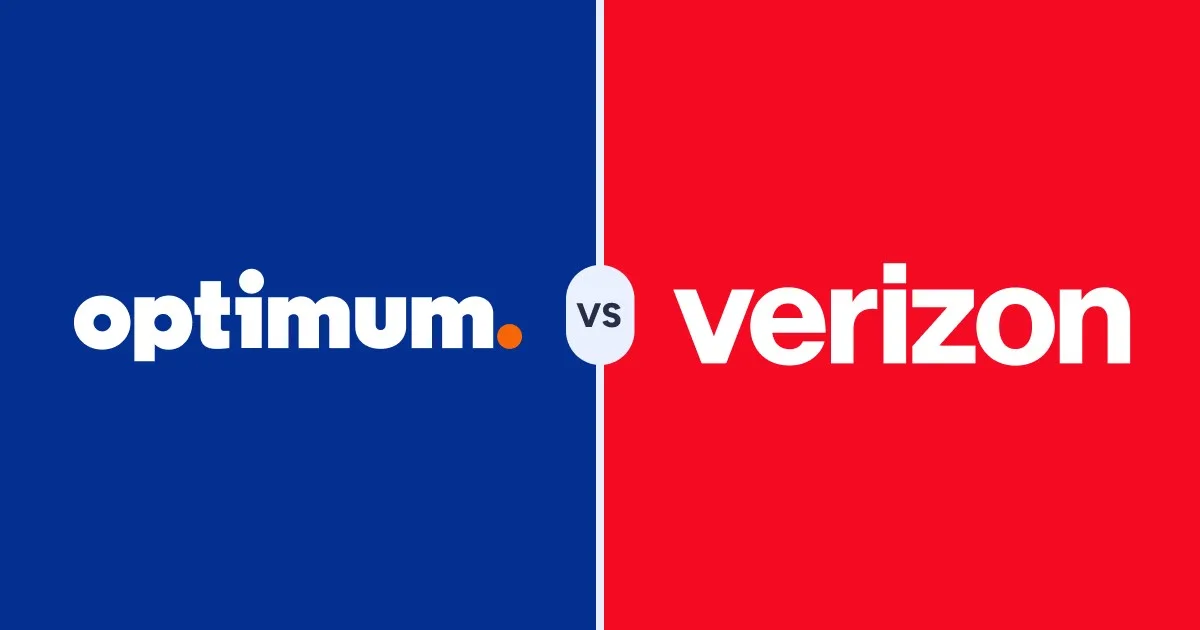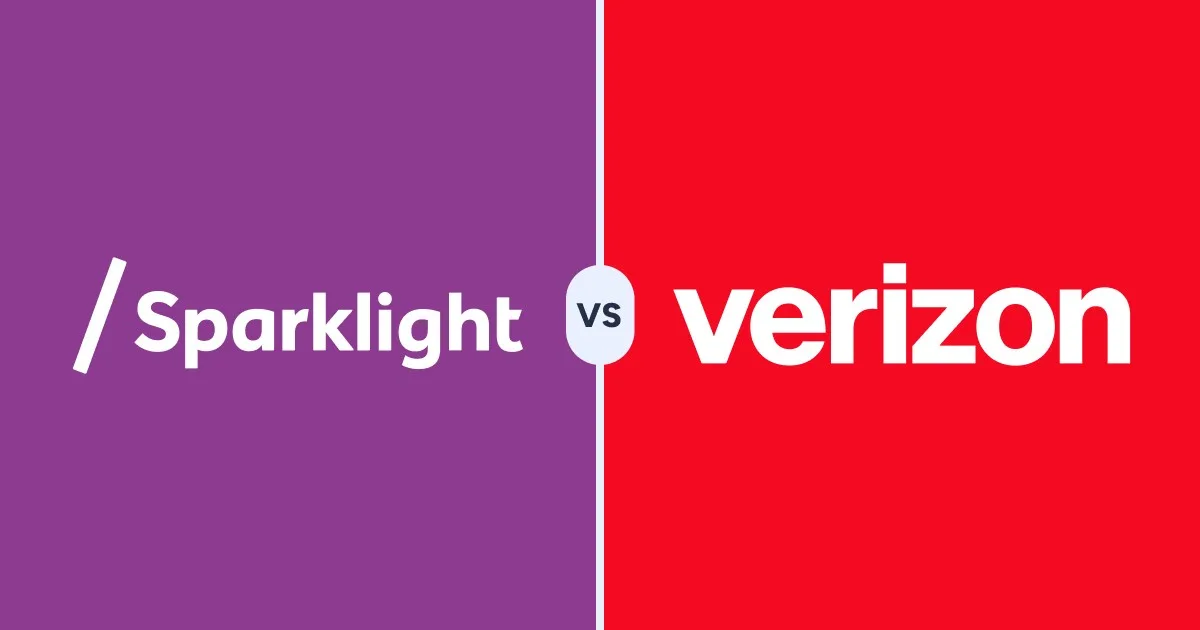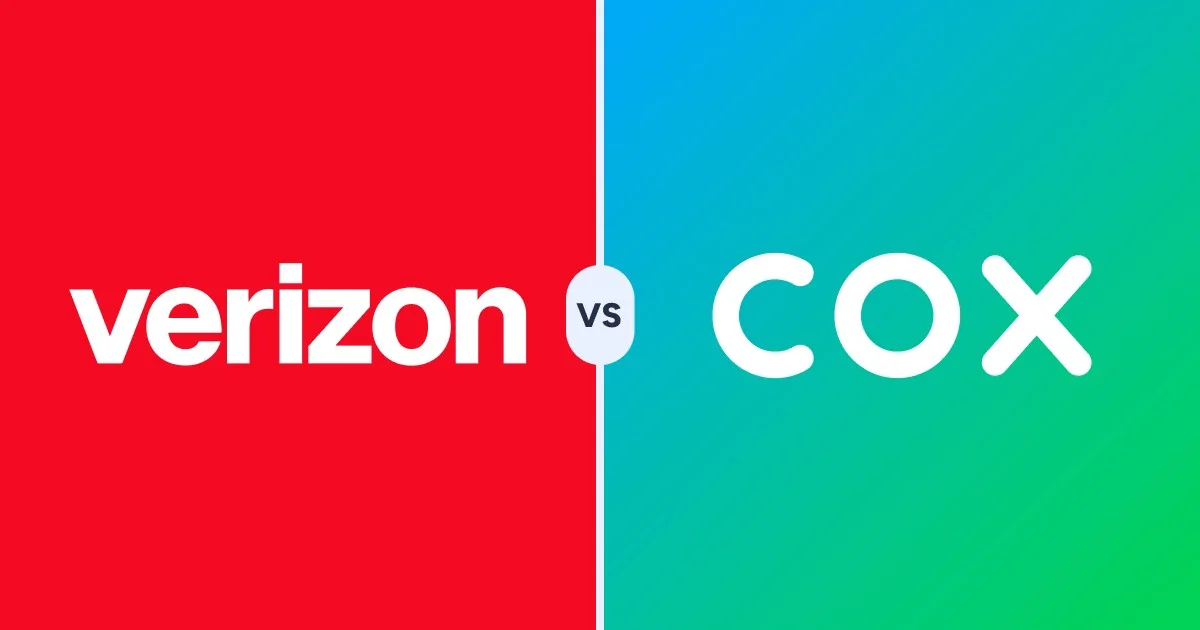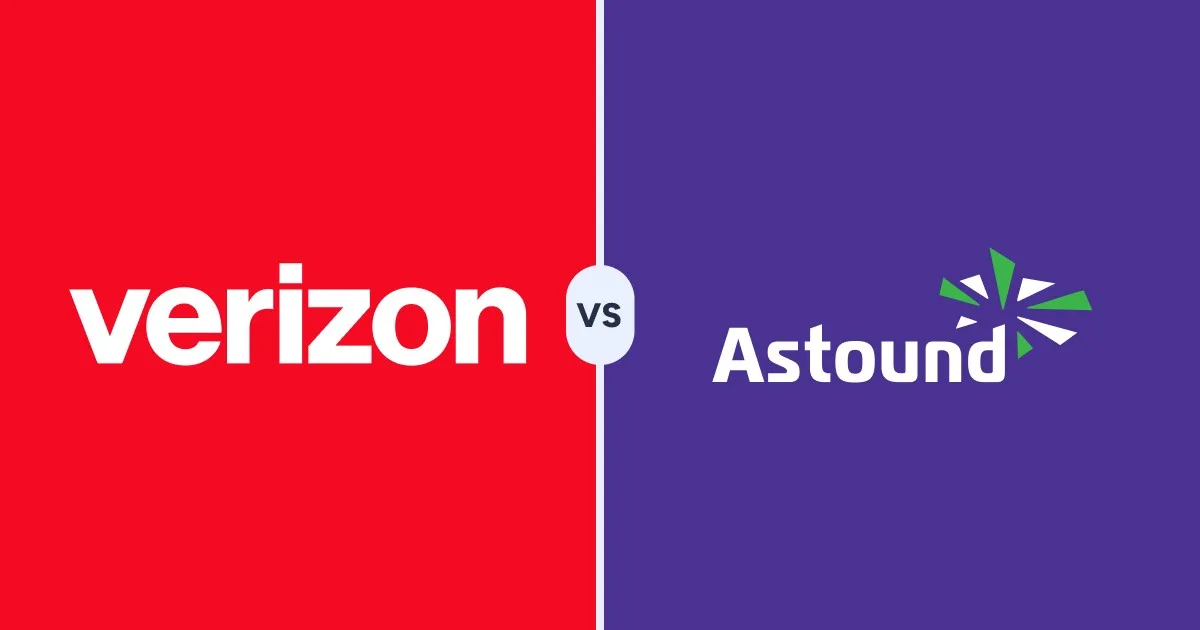AT&T vs. Frontier: Which Internet Provider Is Best for You?
Both have fast fiber internet, but AT&T has the upper hand in customer satisfaction
Dec 23, 2025 | Share
Provider Comparisons (Versus)
-
Best for variety
- Price: $45–$155/mo.
- Customer rating: 3.9†
- Speed: 100–5,000Mbps*
- Internet type: Fiber, fixed wireless
- Data cap: Varies
- Contract: No contract
-
Best for price
- Price: $29.99–$199.99/mo.
- Customer rating: 3.5†
- Speed: 200–7,000Mbps*
- Internet type: DSL, fiber
- Data cap: No cap
- Contract: Optional 1-year agreement with Visa Reward Card
* Data as of 12/23/2025. Offers and availability may vary by location and are subject to change.
† Rating based on a five (5) point system used in our customer satisfaction survey. Higher is better.
Compare AT&T and Frontier head to head
AT&T is the best choice for fiber internet. It has a handful of fiber plans at great prices, making it one of the best internet services for gaming. Frontier is no slouch in delivering fast fiber speeds, but its fiber network is far less available than AT&T’s. Frontier still offers DSL internet as your optional service, while AT&T has fixed wireless internet with DSL-like speeds.
Want to see if AT&T or Frontier are in your area?
Enter your zip code below to see if AT&T or Frontier offers their fast fiber internet where you live.
In this comparison:
Plans and pricing | Extra fees | Customer ratings | Bundles | Internet connection types | Data caps | Contracts | Installation | Availability
In this comparison:
Plans and pricing: AT&T vs. Frontier
Overall, AT&T has a larger fiber footprint across the US than Frontier. Both offer alternative internet options, too, if you can’t get fiber: fixed wireless with AT&T and DSL with Frontier. AT&T still has DSL internet, but like Verizon, it doesn’t offer DSL to new customers.
AT&T plans and pricing
| Package | Price | Speed | Type |
|---|---|---|---|
| Internet 100 | $45/mo.† | 100Mbps | Fiber |
| Internet 300 | $55/mo.* | 300Mbps | Fiber |
| Internet 500 | $65/mo.* | 500Mbps | Fiber |
| Internet 1000 | $80/mo.† | 1,000Mbps | Fiber |
| Internet 2000 | $125/mo.† | 2,000Mbps | Fiber |
| Internet 5000 | $155/mo.† | 5,000Mbps | Fiber |
| Internet Air | $60/mo.‡ | 300Mbps | Fixed Wireless/5G |
See disclaimers.
AT&T stopped offering DSL internet to new customers, so it’s now primarily a fiber and fixed wireless provider. It clashes with Frontier’s fiber only in a few places—meaning you’ll probably never see them both. If you do, both have plans ranging from 500Mbps to 5,000Mbps if speed is what you need. AT&T is the only one of the two with a 300Mbps plan.
AT&T and Frontier command a larger portion of the nation with fixed wireless and DSL, respectively. Again, you may not see these two overlap, but if they’re both listed in your area, AT&T is the better choice. You get speeds of up to 225Mbps with its fixed wireless service, although AT&T has it locked down with a data cap.
Frontier plans and pricing
| Package | Price | Speed | Type |
|---|---|---|---|
| Frontier Fiber 200 | $29.99/mo.✝ | 200Mbps | Fiber |
| Frontier Fiber 500 | $44.99/mo.‡ | 500Mbps | Fiber |
| Frontier Internet | $64.99/mo.* | Call for details | DSL |
| Frontier Fiber 1 Gig | $64.99/mo.§ | 1,000Mbps | Fiber |
| Frontier Fiber 2 Gig | $99.99/mo.║ | 2,000Mbps | Fiber |
| Frontier Fiber 5 Gig | $129.99/mo.# | 5,000Mbps | Fiber |
| Frontier Fiber 7 Gig | $199.99/mo.** | 7,000Mbps | Fiber |
See disclaimers.
Frontier is mostly a DSL internet provider with some fiber. It has noticeably cheaper fiber prices than AT&T, especially when we compare the multi-gig plans. Plus, it doesn’t raise your rates—just like AT&T—so it’s a far better megabit-per-dollar value.
Frontier’s fiber is limited in availability, however, so you may see its DSL internet instead. The plan costs more than Frontier’s 500Mbps fiber, but AT&T’s fixed wireless ain’t exactly cheap for the speeds you get, either. If you want more megabits for your buck, you may want to check for cable internet in your area instead.

Deal and promotions: AT&T vs. Frontier
-
Get a reward card worth up to $200 when you sign up for 2-GIG or 5-GIG plan from AT&T Fiber by June 1, 2026
-
Save 20% every month when you bundle unlimited wireless with home internet from AT&T
- Get a $200 gift card at checkout when you sign up for a Fiber 5 Gig plan from Frontier
- Get $250 each for you and a friend when you refer them to Frontier Fiber by Jan 31
- Try Unbreakable Wi-Fi backup internet free for one month
Extra fees: AT&T vs. Frontier
Data as of 10/22/23. Offers and availability may vary by location and are subject to change.
AT&T is the only provider of the two with data caps, but they only apply to its DSL with speeds of 75Mbps or less, and its fixed wireless internet—fiber has no data cap. Meanwhile, Frontier’s monthly rates include autopay and paperless billing discounts, so expect to pay $7.99 extra each month if you opt out of both.
Want to know if AT&T or Frontier are in your area?
Take a look by typing in your zip code below.
Customer ratings: AT&T vs. Frontier
* Rating based on a five (5) point system used in our customer satisfaction survey. Higher is better.
AT&T takes the fourth spot for overall satisfaction among the 15 national internet providers in our latest customer satisfaction survey. Its strongest point is price satisfaction, which isn’t surprising given the speeds you get for the money. In fact, it has a better pricing score than the national average. AT&T also ranks in the top five for customer service, reliability, and speed satisfaction, showing that it’s a really solid provider if you want fiber internet.
Frontier also delivers fiber internet, but its satisfaction ratings are far lower than AT&T. It ranks in the bottom half in nearly every category except for price, where it ranks seventh, placing it just ahead of Spectrum. Frontier doesn’t increase prices for at least four years, making it a better choice over other providers with shorter promotional periods.
Best TV and internet bundles
| Internet speed | TV channels | Price | Order online | |
|---|---|---|---|---|
| DIRECTV ENTERTAINMENT™ + AT&T Fiber Internet 300 | Up to 300Mbps | 165+ | $129.99/mo.* for 24 mos. Plus taxes and fees | |
| DIRECTV CHOICE™ + AT&T Fiber Internet 300 | Up to 300Mbps | 200+ | $144.99/mo.*† for 24 mos. Plus taxes and fees | |
| Frontier 500 + YouTube TV | Up to 500Mbps | 100+ | $107.98/mo. ‡ | View Plans |
| Frontier 1 Gig + YouTube TV | Up to 1,000Mbps | 100+ | $127.98/mo. ‡ | View Plans |
* for 24 months plus taxes & internet equip. fee w/ 24-mo. TV agmt. Autopay & paperless bill req’d. After 2 years, then month to month at then current prevailing prices unless cancelled. $10/mo. internet equip. fee applies. Geo & svc. restr’s apply.
$99.99/mo. w/req’d $10/mo. TV Access Fee) w/24-mo. agmt. Autopay and paperless bill req’d. One-time $49.95 activation fee is extra and applies.
† $124.98/mo. w/req’d $10/mo. TV Access Fee & Regional Sports Fee of up to $19.99/mo.) w/ 24-mo.agmt. Autopay and paperless bill req’d. One-time $49.95 activation fee is extra and applies.
‡ Limited time offer for Frontier Internet subscribers who are first-time YouTube TV customers. Terms apply.
Technically, AT&T doesn’t bundle TV with its fiber internet. Instead, you can get DIRECTV packages through AT&T to complement its fiber internet. There are no perks or discounts as seen with traditional TV and internet bundles.
Frontier bundles YouTube TV with its fiber and DSL services. Customers save $10 a month by bundling and getting 100+ channels of live TV.
Internet types: AT&T vs. Frontier
| Internet type | Order online | |
|---|---|---|
|
| View Plans |
DSL internet uses telephone cables to bring the internet into your home. A 140Mbps or slower speed is typical for a DSL connection, although Kinetic’s DSL service can reach up to just over 200Mbps.
Fiber-to-the-home services from AT&T and Frontier have a somewhat smaller footprint, generally covering around 30% of their national markets. AT&T is the only provider of the two with a fixed wireless service, however, which sends internet via transmitters to homes that can’t get a landline connection.
Should you get fixed wireless?
Fixed wireless isn’t just for rural areas. Perhaps you live in an area where fiber and DSL internet just isn’t reliable. Take a look at our fixed wireless internet guide for more about speed, plans, and pricing.
Data caps: AT&T vs. Frontier
| Data Cap | Order online | |
|---|---|---|
|
| View Plans |
Frontier doesn’t enforce data caps on its DSL and fiber services, so you can use the internet all you want without worrying about overage fees and throttled speeds.
AT&T doesn’t enforce data caps with fiber, but its DSL internet with speeds of 75Mbps or lower and its fixed wireless service has data caps. In both cases, you pay $10 for every 50GB you go over the monthly limit.
Contracts: AT&T vs. Frontier
| Contract length | Order online | |
|---|---|---|
|
| View Plans |
AT&T doesn’t lock you down with a traditional contract. That means you can cancel your internet service at any time without penalty.
Frontier also doesn’t enforce contracts for internet service. However, you must sign a one-year agreement if you accept a Visa Reward Card when you sign up for fiber internet.
Installation: AT&T vs. Frontier
| Installation options | Order online | |
|---|---|---|
|
| View Plans |
* When you order service online.
Modern AT&T fiber installations include a termination box outside and a fiber jack installed in the room where AT&T’s desktop optical network terminal (ONT) resides—this device is actually a gateway supporting fiber. Older fiber installations have a smaller ONT mounted on the fiber jack and use Ethernet to connect a standard gateway or router.
With Frontier’s fiber-to-the-home service, a technician installs the ONT in your garage, basement, or closet. After that, the ONT connects to your home’s existing Ethernet or coaxial cable wiring—a MoCA adapter and splitter are required for coaxial cabling and TV. The supplied gateway connects to the Ethernet or coaxial cable jack mounted in the wall.
Like self-installing cable and DSL equipment, your home already needs a fiber connection before you can order a self-install kit from AT&T. Frontier also offers self-install for some fiber plans.
Availability: AT&T vs. Frontier
AT&T has a larger footprint stamped across the US than Frontier. Most of its fiber coverage can be found in the Eastern and Central time zones, except in the Northeast, where Frontier competes with Verizon, Optimum, and Astound. Frontier’s fiber is mostly available in specific hotspots across the nation, like Dallas, Houston, Tampa, and Los Angeles.
AT&T and Frontier have larger fixed wireless and DSL footprints, respectively. For now, AT&T’s fixed wireless is primarily in the south, with additional coverage in Kansas, California, and around the Great Lakes. Frontier’s DSL internet is mostly in the northeast, West Virginia, around the Great Lakes region, California, and in small pockets scattered across the nation.
Which AT&T and Frontier plans are available in your area?
Enter your zip code below:
Final call: AT&T vs. Frontier
AT&T and Frontier rarely overlap, so picking one over the other is limited to just a handful of areas. Both have fast fiber speeds reaching up to 5,000Mbps, so you can’t go wrong with either one if you want fast fiber speeds.
Frontier is the clear cheaper fiber provider of the two, especially when we compare their multi-gig plans. But we can’t overlook Frontier’s customer feedback in our latest satisfaction survey, where it ranks in the bottom half of four out of five categories. AT&T outranks Frontier in every category, indicating that AT&T is a better long-term deal even if its plans cost more.
That said, go with AT&T for its excellent service, reliability, and speed. Frontier is your go-to DSL internet provider of the two, while AT&T fills in the gaps where wired internet isn’t available.
Methodology
Our HighSpeedInternet.com editorial team bases our analyses on customer input from our annual customer satisfaction survey, results from our speed test tool, and proprietary internet provider data on speeds and pricing. To strengthen our research, we look closely at provider contracts to get hard-to-find information on price hikes, data caps, and extra fees, and we keep tabs on the latest news reports and online reviews. When applicable, we also rely on our personal experiences testing these services.
More about AT&T and Frontier
Disclaimers
AT&T plans and pricing
* Price after $5/mo Autopay & Paperless bill discount (w/in 2 bills). Plus taxes & fees. Monthly State Cost Recovery Charge in TX, OH, NV applies. One time install charge may apply. Ltd. avail/areas. Call or go to www.fiber.att.com to see if you qualify. Speeds based on wired connection. Actual speeds may vary. For more info, go to www.att.com/speed101.
† Above pricing is after $10/mo Autopay & Paperless bill discount with a debit card or bank account; if using a credit card, then price is $5/mo more. Pricing includes Equipment Fee. Up to $99 install fee may apply, plus tax where applicable.
‡ $60/mo after $5 discount when enrolled in Autopay. Paperless billing req’d. Not available in NY. Monthly State Cost Recovery Charge in TX, OH, NV applies. . Service subj. to Internet Terms of Service at att.com/internet-terms. Offers may be modified, or discontinued, at any time without notice. Other conditions may apply to all offers. Speeds based on wired connection. Actual speeds may vary. For more info, go to www.att.com/speed101.
Frontier plans and pricing
* w/ Auto Pay and Paperless Bill per month. One-time charges apply.
✝ w/ Auto Pay & Paperless Bill. Max wired speed 200/200 Mbps. Wi-Fi, actual & average speeds vary. One-time charges apply.
‡ w/ Auto Pay & Paperless Bill. Max wired speed 500/500 Mbps. Wi-Fi, actual & average speeds vary. One-time charges apply. In select areas where available.
§ w/ Auto Pay & Paperless Bill. Max wired speed 1000/1000 Mbps. Location dependent. Wi-Fi, actual & average speeds vary. One-time charges apply. In select areas where available.
║ w/ Auto Pay & Paperless Bill. Max wired speed 2000/2000 Mbps. Wi-Fi, actual & average speeds vary. One-time charges apply. In select areas where available.
# w/ Auto Pay & Paperless Bill. Max wired speed 5000/5000. Wi-Fi, actual & average speeds vary. One-time charges apply. In select areas where available.
** w/ Auto Pay & Paperless Bill. Max wired speed 7000/7000. Wi-Fi, actual & average speeds vary. One-time charges apply.
Author - Kevin Parrish
Kevin Parrish has more than a decade of experience working as a writer, editor, and product tester. He began writing about computer hardware and soon branched out to other devices and services such as networking equipment, phones and tablets, game consoles, and other internet-connected devices. His work has appeared in Tom’s Hardware, Tom's Guide, Maximum PC, Digital Trends, Android Authority, How-To Geek, Lifewire, and others. At HighSpeedInternet.com, he focuses on network equipment testing and review.
Editor - Rebecca Lee Armstrong
Rebecca Lee Armstrong has more than six years of experience writing about tech and the internet, with a specialty in hands-on testing. She started writing tech product and service reviews while finishing her BFA in creative writing at the University of Evansville and has found her niche writing about home networking, routers, and internet access at HighSpeedInternet.com. Her work has also been featured on Top Ten Reviews, MacSources, Windows Central, Android Central, Best Company, TechnoFAQ, and iMore.
